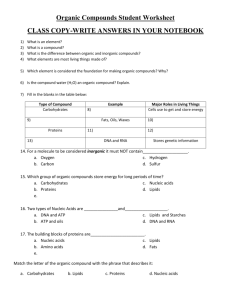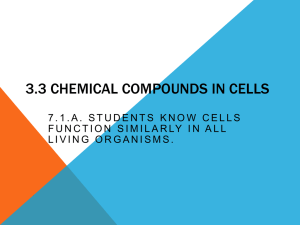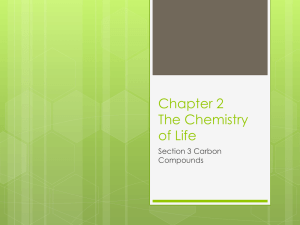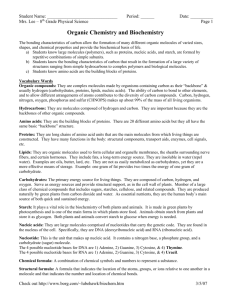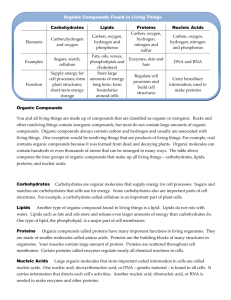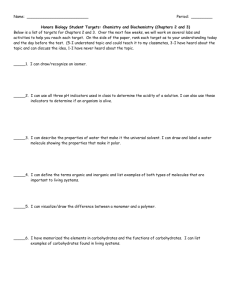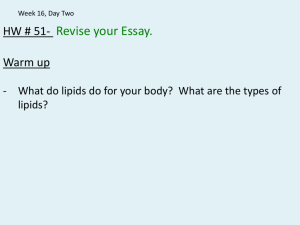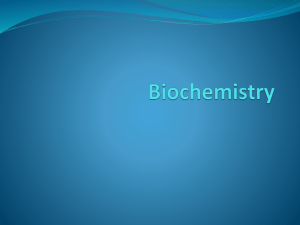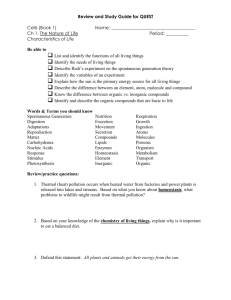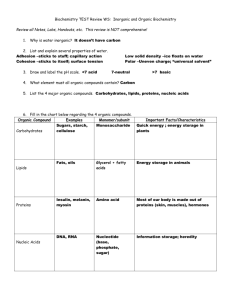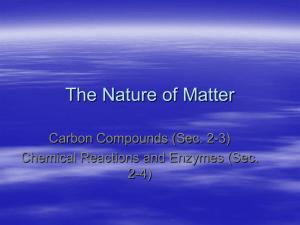Cell Chemistry: Elements, Compounds, and Organic Molecules
advertisement
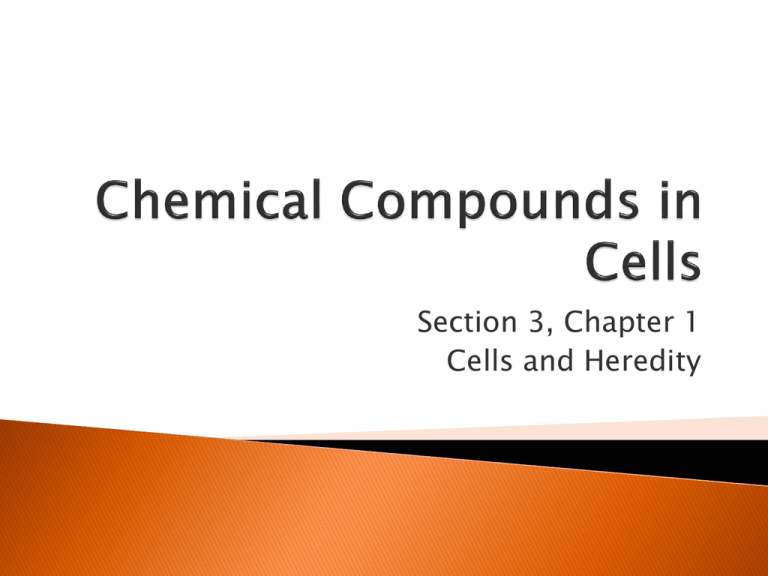
Section 3, Chapter 1 Cells and Heredity An element is any substance that cannot be broken down into simpler substances. Ex: Oxygen The smallest unit of an element is an atom. The elements found in living things include carbon, hydrogen, oxygen, nitrogen, phosphorus, and sulfur. When two or more elements combine chemically, they form a compound. Ex: Carbon Dioxide The smallest unit of many compounds is called a molecule. Most elements in living things occur in the form of compounds. Some important groups of organic compounds found in living things are carbohydrates, lipids, proteins, and nucleic acids. Most compounds that contain carbon are called organic compounds. A carbohydrate is an energy-rich organic compound made of the elements carbon, hydrogen and oxygen. Sugars and starches are examples of carbohydrates. Carbs are important components of some cell parts. Ex: the cellulous found in the cell walls of plants is a type of carbohydrate. Lipids are energy-rich organic compounds made of carbon, hydrogen, and oxygen. They contain even more energy than carbohydrates. Cells store energy in lipids for later use. EX: during winter, a dormant bear lives on energy stored in fat within its cells. Proteins are large organic molecules made of carbon, hydrogen, oxygen, nitrogen and in some cases, sulfur. A bird’s feather, a spider’s web, and your fingernails are mainly made of proteins. Protein molecules are made up of smaller molecules called amino acids. Although there are only 20 common amino acids, cells can combine them in different ways to form thousands of different proteins. Much of the structure of cells is made up of proteins. The proteins known as enzymes perform an important function in the chemical reaction that takes place in the cells. An enzyme is a type of protein that speeds up a chemical reaction in a living thing. EX: enzymes in your saliva speed up the digestion of food by breaking down starches into sugars in your mouth. Nucleic acids are very long organic molecules made of carbon, oxygen, hydrogen, nitrogen and phosphorus. There are two kinds of nucleic acids: Deoxyribonucleic Acid (DNA) and Ribonucleic Acid (RNA) DNA – is the genetic material that carries information about an organism and is passed from parent to offspring. RNA – plays an important role in the production of proteins. Most chemical reactions within cells could not take place without water. Water also helps cells keep their size and shape. Because water changes temperature slowly, it helps keep the temperature of cells from changing rapidly.
